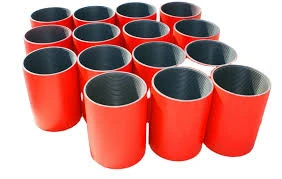- Afrikaans
- Albanian
- Amharic
- Arabic
- Armenian
- Azerbaijani
- Basque
- Belarusian
- Bengali
- Bosnian
- Bulgarian
- Catalan
- Cebuano
- Corsican
- Croatian
- Czech
- Danish
- Dutch
- English
- Esperanto
- Estonian
- Finnish
- French
- Frisian
- Galician
- Georgian
- German
- Greek
- Gujarati
- Haitian Creole
- hausa
- hawaiian
- Hebrew
- Hindi
- Miao
- Hungarian
- Icelandic
- igbo
- Indonesian
- irish
- Italian
- Japanese
- Javanese
- Kannada
- kazakh
- Khmer
- Rwandese
- Korean
- Kurdish
- Kyrgyz
- Lao
- Latin
- Latvian
- Lithuanian
- Luxembourgish
- Macedonian
- Malgashi
- Malay
- Malayalam
- Maltese
- Maori
- Marathi
- Mongolian
- Myanmar
- Nepali
- Norwegian
- Norwegian
- Occitan
- Pashto
- Persian
- Polish
- Portuguese
- Punjabi
- Romanian
- Russian
- Samoan
- Scottish Gaelic
- Serbian
- Sesotho
- Shona
- Sindhi
- Sinhala
- Slovak
- Slovenian
- Somali
- Spanish
- Sundanese
- Swahili
- Swedish
- Tagalog
- Tajik
- Tamil
- Tatar
- Telugu
- Thai
- Turkish
- Turkmen
- Ukrainian
- Urdu
- Uighur
- Uzbek
- Vietnamese
- Welsh
- Bantu
- Yiddish
- Yoruba
- Zulu
Understanding the Benefits and Applications of Seamless Pipes in Modern Engineering
The Significance and Applications of Seamless Pipes
Seamless pipes play a vital role in a wide range of industrial applications due to their unique manufacturing process and distinct advantages over traditional welded pipes. These pipes are produced without any seams or welds, making them less susceptible to corrosion, pressure, and mechanical stress. This article explores the significance, manufacturing process, and diverse applications of seamless pipes in modern industries.
Manufacturing Process
The manufacturing process of seamless pipes involves a series of precise steps that ensure the highest quality of the final product. The traditional methods include the use of a solid round steel billet, which is heated and then pierced to create a hollow tube. This tube is further elongated and reduced in thickness using various elongation and elongation techniques until the desired dimensions are achieved. Common methods include rotary piercing, elongation, and extrusion.
Once the seamless pipe is formed, it undergoes a rigorous quality assurance process. This includes non-destructive testing methods such as ultrasonic testing, eddy current testing, and hydrostatic testing to ensure that there are no defects or weaknesses in the structure. The controlled manufacturing conditions and comprehensive testing make seamless pipes highly reliable for demanding applications.
Advantages of Seamless Pipes
One of the primary advantages of seamless pipes is their ability to withstand high pressure and extreme temperatures without compromising integrity
. Without seams to serve as potential weak points, these pipes exhibit improved strength and durability, making them particularly suitable for high-stress environments such as oil and gas extraction, chemical processing, and power generation.Another key benefit is corrosion resistance. Seamless pipes can be produced using various alloys and coatings that enhance their performance in corrosive environments. This is crucial in industries such as petrochemicals and marine applications, where exposure to aggressive substances is common.
Seamless pipes also offer better flow characteristics compared to their welded counterparts. The absence of seams minimizes turbulence and obstruction, allowing for smoother fluid flow. This feature is particularly advantageous in applications such as water supply, oil transportation, and natural gas distribution.
seamless pipe

Applications of Seamless Pipes
Seamless pipes find extensive applications across multiple sectors
1. Oil and Gas Industry Seamless pipes are predominantly used in drilling and exploration activities due to their high strength and ability to withstand extreme conditions. They are employed in various components such as casing, tubing, and pipelines, ensuring the safe and efficient transport of oil and gas.
2. Construction In the construction industry, seamless pipes are utilized in various structural applications, including scaffolding, columns, and beams. Their strength and durability make them ideal for supporting heavy loads and enhancing the longevity of structures.
3. Aerospace The aerospace sector relies heavily on seamless pipes for the manufacture of critical components in aircraft. Due to their lightweight yet robust nature, these pipes are essential in maintaining the structural integrity and performance of aerospace vehicles.
4. Automotive In automotive manufacturing, seamless pipes are used in exhaust systems, fuel delivery lines, and hydraulic systems. Their ability to withstand high pressure and harsh conditions makes them indispensable in modern vehicles.
5. Chemical and Petrochemical Industries Seamless pipes are crucial in transporting chemicals and fluids in processing plants. Their resistance to corrosion and chemical reactions ensures safe handling of potentially hazardous materials.
Conclusion
In summary, seamless pipes are essential components across various industries, offering unparalleled strength, durability, and reliability. Their unique manufacturing process and numerous advantages make them a preferred choice for high-pressure applications, harsh environments, and structural components. As industries continue to evolve and demand higher standards of material performance, seamless pipes will undoubtedly remain at the forefront of engineering innovation and application. Whether in energy production, construction, or transportation, seamless pipes are set to play a critical role in ensuring the efficiency and safety of modern infrastructures.
-
Tubing Pup Joints: Essential Components for Oil and Gas OperationsNewsJul.10,2025
-
Pup Joints: Essential Components for Reliable Drilling OperationsNewsJul.10,2025
-
Pipe Couplings: Connecting Your World EfficientlyNewsJul.10,2025
-
Mastering Oilfield Operations with Quality Tubing and CasingNewsJul.10,2025
-
High-Quality Casing Couplings for Every NeedNewsJul.10,2025
-
Boost Your Drilling Efficiency with Premium Crossover Tools & Seating NipplesNewsJul.10,2025







